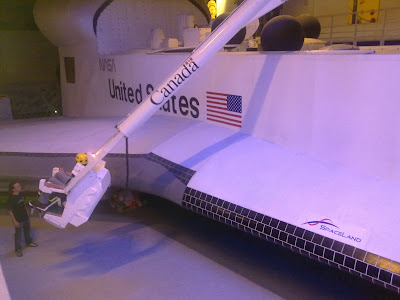Spaceland: anche una 72-enne in orbita
 Con i suoi 72 anni sarà la persona più anziana d'Europa - la seconda nel mondo - a partecipare a un volo aerospaziale. Quello di Gloria Coco sarà un volo suborbitale per scopi scientifici inserito nel progetto Spaceland.
Con i suoi 72 anni sarà la persona più anziana d'Europa - la seconda nel mondo - a partecipare a un volo aerospaziale. Quello di Gloria Coco sarà un volo suborbitale per scopi scientifici inserito nel progetto Spaceland. Come spiega Carlo Viberti (comandante delle missioni Spaceland): ''Campioneremo le reazioni del suo cervello in diversi stati di gravità. Queste attività saranno utili anche nella ricerca contro l'Alzheimer".
Gloria Coco si è sottoposta a tre cicli di addestramento: immersioni, controlli medici, esercizi di orientamento."
I primi due in Sardegna, uno subacqueo e l'altro in grotta, il terzo a Bruxelles per la preparazione al lancio che avverà nel mese di ottobre di quest'anno.

Uno studio di D. Santucci (Section of Behavioural Neuroscience, Department of Cell Biology and Neuroscience, Istituto Superiore di Sanità, Rome) e altri evidenzia l'importanza per la medicina della presa di dati nel corso dei voli sbuorbitali.
Salivary NGF, BDNF and Cortisol levels during Parabolic Flight
Abstract
Nerve growth factor (NGF) is a well-studied polypeptide growth factor involved in the development and maintenance of specific peripheral and central populations of neuronal cells. In the central nervous system NGF acts as trophic factor for those neurons (mainly cholinergic and peptidergic) that are known to degenerate in disorders, such as Alzheimer’s disease, which is becoming progressively more frequent due to the longer lifespan of the western population.
 More recently, NGF target cells have been identified in the nervous, immune, and endocrine systems, and an increasing body of evidence suggest that NGF, in addition to its role as a neurotrophic agent, may operate through multiple paths to ultimately regulate physiological homeostasis and behavioural coping. In previous studies, we used a mouse model of social stress to demonstrate that NGF levels increase both in plasma and in the hypothalamus following intermale aggressive interactions and more recently, we found an increase in NGF levels both in plasma and in some brain areas, such as the frontal cortex, hippocampus and hypothalamus, of mice exposed to rotation-induced hypergravity (2g).
More recently, NGF target cells have been identified in the nervous, immune, and endocrine systems, and an increasing body of evidence suggest that NGF, in addition to its role as a neurotrophic agent, may operate through multiple paths to ultimately regulate physiological homeostasis and behavioural coping. In previous studies, we used a mouse model of social stress to demonstrate that NGF levels increase both in plasma and in the hypothalamus following intermale aggressive interactions and more recently, we found an increase in NGF levels both in plasma and in some brain areas, such as the frontal cortex, hippocampus and hypothalamus, of mice exposed to rotation-induced hypergravity (2g).Conclusions
In agreement with previous studies on parachutists and on astronaut experiencing stress related to skydiving and space mission, experimental subjects showed an increase in salivary levels of NGF and BDNF only during specific phases of the flight. Moreover, individual as well as age-related differences have been observed. These data confirm the role of NGF and BDNF in the adaptative response to “extreme situations” involving psychological stress.



Commenti